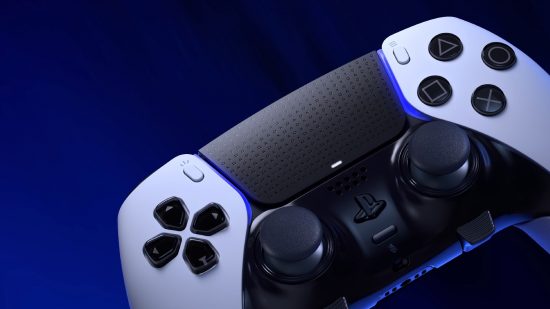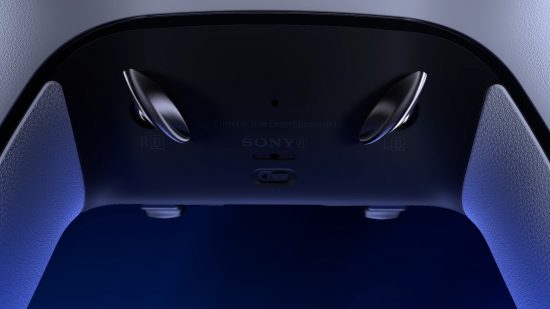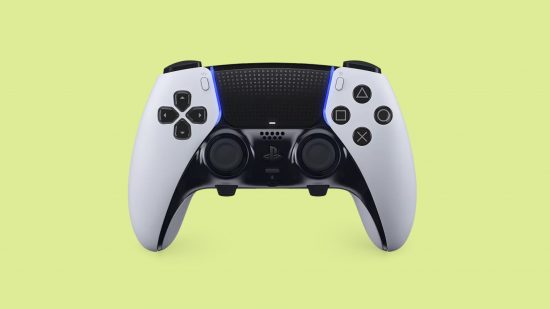Our Verdict
The DualSense Edge might come at a premium, but it fills a gap in the PS5 market. With intuitive controls and unrivalled personalisation, the only thing that lets the Edge down is its battery life.
For a long time now, PlayStation players looking to get the edge in the best competitive FPS games have had to rely on third-party controllers. Now, with the dawn of the PS5 DualSense Edge, all of that is about to change.
Clearly a direct competitor to the Xbox Elite Controller, the DualSense Edge, priced at around $200 (£210), is designed with personalization in mind. With customizable controls, multiple profiles, and refined ergonomics, there really isn’t a reason why this sleek new controller shouldn’t give you the competitive edge you’re looking for.
The controller looks very similar to the DualSense at first glance – and both make our list of the best PS5 controllers. But the more you stare at it, the more its small, distinct changes make themselves known. The trackpad and its casing are glossy black rather than white, giving it a nice sheen. The directional pad and the action buttons also follow this black color scheme, something I definitely prefer over the DualSense.
The new function buttons found at the bottom of the DualSense Edge, which allow you to switch and adjust settings on the PlayStation 5 without really having to flick through a bunch of menus, stand out a bit more than I had hoped for, but like all new things, I quickly got used to them.
The back triggers also feature a textured end to them, allowing you to grip better. Similar to many PlayStation accessories, they have lots of small PlayStation buttons to create the effect, and while you won’t pay attention to it for the most part, it is a nice detail to have.
On the back of the controller, you have two customizable back buttons, as well as sliders to adjust the trigger length. There are three settings for each trigger, but I was mostly happy changing between the standard DualSense trigger and the much lower bottom level, which made every tap feel instantaneous. There’s also a small release switch for the sticks on the back, which I’ll circle back to in a bit.

All of these smart little extras do add a fair bit of weight to the Edge, though. While I quickly fell in love with the extra weight during my gaming sessions, it’s worth bearing in mind if you already find the DualSense controller a hefty chunk of plastic.
As for connectivity, it all syncs up well. Using the premium braided cable which comes inside the carrying case that comes with the controller, the console instantly recognized the new controller, running me through a tutorial. Unlike the Xbox Elite, which requires you to use the Xbox Accessories app, everything is already there for you on the PS5, ready for you to set up your custom game profiles.
I played a variety of the best PS5 games with the DualSense Edge, ranging from competitive shooters like Modern Warfare 2 and Fortnite, all the way to fighting games like Guilty Gear Strive and action titles like Gotham Knights. Switching profiles between games was simple (once you’d set them up, of course), by hitting the Fn and associated action. I was a little worried I’d have to remember which profile I set each command for, but an intuitive UI tells you which profile is linked to which action – something I was definitely impressed by.

When playing FPS titles, I used the semi-circle paddles instead of the levers for the back buttons, both mapped to L1 and R1. While the levers are fine, I think the semi-circles add some much-needed stability, and it was easy to rest my fingers on them as I played. It was so simple to simply click them to throw grenades or move along my item bar in Fortnite, that I now accidentally do this on my normal controllers.
The trigger-length sliders worked best with Modern Warfare 2. I found myself beating other players in most gunfights in small maps like Shipment using the shortest trigger lengths, allowing me to remain at the top of the leaderboard for longer. At first, the input felt a bit too quick, but the more I played, the more I got used to it – and now I wouldn’t have it any other way. They aren’t as great when playing action-adventure games and the such, but they’re excellent for competitive games.
I wasn’t expecting much from the DualSense Edge, but it feels really good to use. The controller fits snugly into my hand, the buttons are laid out in an intuitive way, and I feel like it’s giving me the upper hand in my games. it’s just easy to use. While I know it’s not a cheat code to getting good, the optional functionality in the trigger sliders, the game profiles, the back buttons, and the macros makes it worth using alone.
One of the greatest features of the Edge, though, is the swappable stick modules – especially when you look ahead to the future. With stick drift being such a prevalent problem worldwide, having the option to swap sticks for the small price of $19 / £19 seems like a bargain in the grand scheme of things. It’s a surprise that no major first-party brand has done this yet, and while I haven’t needed to swap them out yet, I know I’m going to appreciate this in the future.

The only downside to the DualSense Edge is its battery life. It isn’t as good, lasting a couple of hours less (around ten hours) than the normal controller, so for those who play for extended times, it’s not the best on the market. However, with the long braided USB cable, which comes with lockable connector housing to prevent the cable from falling out of the controller, you don’t have to rely on its wireless functionality all the time.
For its price point, the DualSense Edge needed to be a premium controller from PlayStation. While it could have offered the bare minimum and sold well, the DualSense Edge offers some of the best experiences out of a controller. Its ease-of-use and comfortable grip, alongside a variety of great accessories and the final touches with the swappable stick modules, makes the DualSense Edge the most elite controller on the market right now, and one I’ll be finding myself using in most gaming sessions for the foreseeable future.
